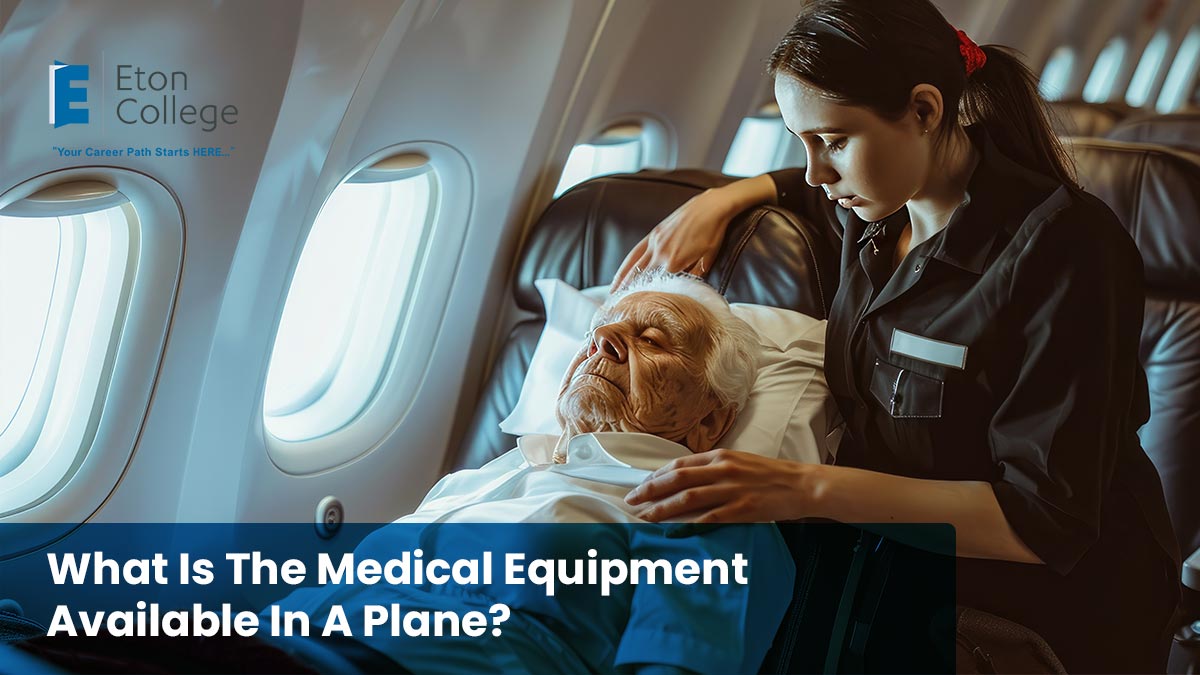- Airplanes are equipped with first aid kits containing essential items like bandages, antiseptics, and over-the-counter medications for minor medical issues.
- Automated External Defibrillators (AEDs) are life-saving devices used during cardiac emergencies, with easy-to-follow voice prompts for both trained and untrained users.
- Airplanes carry EpiPens to treat severe allergic reactions, offering immediate relief from anaphylactic shock.
- Flight crews can consult ground-based medical professionals for guidance in managing in-flight emergencies.
- Aviation authorities like the FAA mandate the presence of specific medical equipment on commercial airplanes for passenger safety.
In-flight emergencies, though rare, can happen when you least expect them. Airlines have prepared for these situations by equipping aircraft with a range of medical tools and kits designed to handle various medical issues until the plane can land or proper medical assistance arrives. But what exactly is the medical equipment available on board, and how is it used in emergencies?
Here’s a breakdown of the essential medical equipment available on planes and how each piece contributes to passenger safety.
1. First Aid Kit
All commercial airplanes are equipped with a standard first aid kit, designed to treat minor injuries and medical conditions. These kits typically contain items like adhesive bandages, gauze, antiseptic wipes, and over-the-counter medications such as aspirin.
Flight attendants are trained to administer basic first aid and use these supplies effectively.
2. Automated External Defibrillator (AED)
One of the most critical pieces of medical equipment available on an airplane is the Automated External Defibrillator (AED). This life-saving device is used to treat passengers who suffer from sudden cardiac arrest.
AEDs are simple to use and provide step-by-step voice prompts to guide even untrained users. In the event of a cardiac emergency, the AED can restore a passenger’s heart rhythm before professional medical help arrives.
3. Airplane Emergency Medical Kits
In addition to basic first aid supplies, aircraft are required to carry more advanced tools for serious medical incidents. The airplane emergency medical kits include items like stethoscopes, syringes, IV needles, and medications to treat allergic reactions, severe pain, and other critical conditions. These kits are usually designed for use by licensed medical professionals who may be onboard, such as doctors or nurses, and can be instrumental in stabilizing a passenger’s condition during the flight.
4. Oxygen Masks and Tanks
Another important piece of equipment is the oxygen mask system. Oxygen masks are typically deployed during a loss of cabin pressure, but they are also used for passengers who are experiencing respiratory distress. Most commercial airplanes have portable oxygen tanks that can be moved to a passenger’s seat, allowing them to receive oxygen as needed.
5. Emergency Medical Guidelines
Alongside the medical kits, flight attendants have access to detailed emergency medical guidelines. These guidelines, which can be consulted in real time, help attendants and any medical professionals onboard diagnose and manage various medical conditions, from heart attacks to asthma attacks.
6. EpiPens
Airlines also stock EpiPens in their medical kits for treating severe allergic reactions (anaphylaxis). Since food allergies and other unexpected allergic responses can occur at any time, having access to an EpiPen on board is vital for preventing life-threatening reactions.
7. Thermometers and Blood Pressure Cuffs
Some airplanes are equipped with additional tools such as thermometers and blood pressure cuffs. These allow flight attendants or onboard medical professionals to monitor a passenger’s vital signs and determine the severity of their condition.
8. Airplane Emergency Medical Kits: Regulatory Requirements
Regulations from aviation authorities like the Federal Aviation Administration (FAA) or the International Civil Aviation Organization (ICAO) mandate that commercial aircraft carry medical kits. The content of these airplane emergency medical kits may vary depending on the airline or country, but all kits are designed to address the most common and critical in-flight medical situations.
Your Path to Handling In-Flight Emergencies
The medical equipment available on a plane is designed to handle both minor and life-threatening emergencies. From first aid kits to more advanced airplane emergency medical kits, airlines prioritize passenger safety by ensuring they are prepared for almost any scenario.
Being prepared for in-flight medical emergencies is a critical part of a flight attendant’s role. At Eton College, the Flight Attendant Preparation Program offers comprehensive training to ensure aspiring flight attendants are well-equipped with the knowledge and skills needed to handle a wide range of medical situations. If you’re passionate about ensuring passenger safety, consider enrolling in Eton College’s program and get ready to soar in your flight attendant career.
FAQs
- What is included in an airplane’s first aid kit?
Airplane first aid kits typically include items like bandages, gauze, antiseptic wipes, over-the-counter medications, and other essentials for treating minor injuries.
- How do flight attendants handle medical emergencies during a flight?
Flight attendants follow detailed emergency medical guidelines and use the available medical equipment to manage the situation until the plane lands or further medical help arrives.
- What happens if a passenger has a heart attack during a flight?
Flight attendants will use an Automated External Defibrillator (AED) and follow their training to manage the situation until the plane can land or medical help becomes available.
- Do flight attendants receive medical training as part of their preparation?
Yes, flight attendants receive extensive training in first aid, CPR, and the use of AEDs and emergency medical kits during their certification programs.
- Can passengers with chronic illnesses bring their own medical equipment on board?
Passengers with chronic conditions can bring personal medical equipment, such as inhalers or insulin pumps, but they should notify the airline in advance to ensure smooth coordination during the flight.





